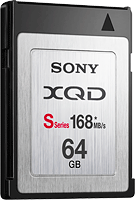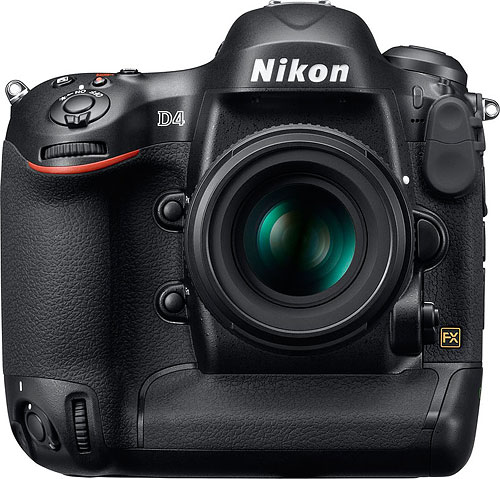Is it double-down time for the fledgling XQD flash card format?
posted Wednesday, July 11, 2012 at 7:58 PM EDT
 At the start of the year, a new flash card type debuted with the brand-new Nikon D4 digital SLR: the CompactFlash Association's XQD format. Six months later, and there is still just one XQD card manufacturer, only two cards available, and the Nikon D4 is still the sole camera that can accept them. Much of that is about to change, as two press releases from Sony and Lexar see a doubling in the number of XQD card makers, the number of card types announced, and their maximum capacity, while an increase in speed looks set to deliver on the format's initial promise.
At the start of the year, a new flash card type debuted with the brand-new Nikon D4 digital SLR: the CompactFlash Association's XQD format. Six months later, and there is still just one XQD card manufacturer, only two cards available, and the Nikon D4 is still the sole camera that can accept them. Much of that is about to change, as two press releases from Sony and Lexar see a doubling in the number of XQD card makers, the number of card types announced, and their maximum capacity, while an increase in speed looks set to deliver on the format's initial promise.
The XQD standard is significant because it promises greater speed than traditional CompactFlash cards, although as we learned at the CES show, the first generation of XQD cards were actually slower than the fastest CompactFlash cards, based on the manufacturers' own speed ratings. Alongside the launch of Nikon's D4, Sony unveiled two XQD cards, both described as H-series types with capacities of 16GB and 32GB respectively. Sony's H-series XQD cards are capable of 125MB/second sustained read and write speeds, which is certainly fast, but bettered by Lexar's 150x CompactFlash cards at 150MB/second (read speed; Lexar doesn't cite a write speed for the cards).
|
Nikon's D4 digital SLR is so far the only camera to support XQD flash cards. Photo provided by Nikon Inc. |
Now, Sony has revealed the first S-series XQD card models, and this time the nascent format takes the lead, with claimed sustained read / write speeds of 168MB/second. That's ever so slightly higher than the theoretical maximum of 167MB/second for CompactFlash, and a full twelve percent faster than Lexar's 1000x rated speed even for reads. If the S-series cards hold true to their claimed write speeds, the difference will be even more significant in this crucial spec. Sony states that in the Nikon D4, its in-house testing found a buffer depth of 108 raw frames using one of the new cards.
The new Sony S-series XQD cards will be offered in two capacities initially: 32GB, or 64GB. That's twice the capacity of the S-series cards, which are sold in 16GB and 32GB sizes.
Alongside Sony's announcement, Lexar has announced that it is preparing for its own XQD format debut later this year, which will take the number of XQD card manufacturers to two. No details on planned capacities or speeds are yet available, but Lexar states that it expects the cards to become available in the third quarter of the year. The timeframe is interesting, because this year sees the return of the biennial Photokina tradeshow in Cologne, Germany. Photokina 2012 takes place towards the end of the third quarter; a betting man might be expecting to see more XQD-compatible products appearing around the same time frame...
